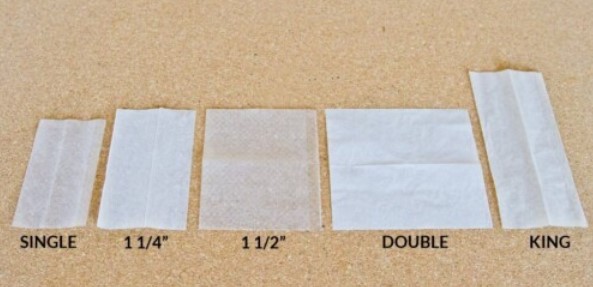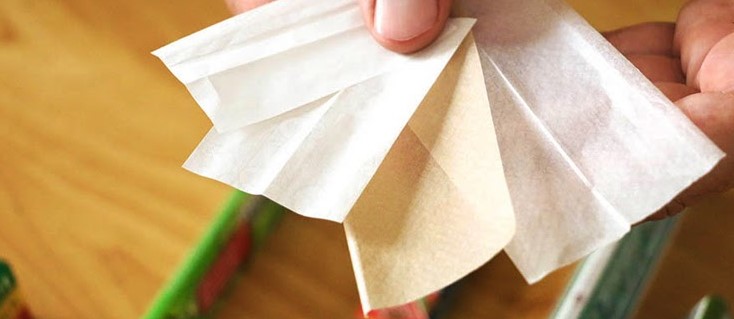Uncategorized
Rolling Papers Guide
All rolling papers are designed for the same purpose – to hold dry herbs so they can be smoked. But did you know that there is a wide range of options when it comes to size, shape, color and flavor? And did you also know that these Papers can be made out of different materials? Some brands like Zig Zag focus on advertising to tobacco smokers specifically by saying their product is perfect for rolling cigarettes. However, Zig Zag’s highest customer base actually consists of cannabis enthusiasts!
Are rolling papers illegal?
Marijuana rolling papers are not currently illegal, but there was a time when the selling of cannabis-related goods was more restricted. To get around that obstacle, most companies that have been successful in the industry advertised their products as intended for use with tobacco instead. That’s why you might see a smoking sailor rather than a toking pothead on your favorite rolling papers and blunt wraps.
Can you buy rolling papers under the age of 18?
In Canada, the legal age to purchase rolling papers is 18. Vendors are required to ask for age verification because these items are often used with products that are intended for adults, such as tobacco. If a vendor sells rolling papers to a minor, they can be charged accordingly .
Is there nicotine in rolling papers?
Although it is typical for manufacturers to add various chemicals as additives in rolling papers, nicotine is not one of them. The only type of cannabis rolls that do contain nicotine are called blunt wraps—and these consist of cured tobacco leaves. Any standard joint rolling paper will not have any traces of nicotine.
Which rolling papers are the healthiest?
Today, there is a hot debate over what the healthiest rolling papers are. Some say that chemical- and processing-free options are best, while others prefer food-based choices like rice paper. However, RAW rolling papers seem to be the most popular among cannabis fans. They’re vegan friendly and made of 100% hemp fibers.
Overview of effects, health benefits, and drawbacks
The main advantages of rolling papers over other methods are easier dosing, portability, and size. But it is essential to be mindful of what kind you buy. Some have harmful additives that can negatively impact your health. Smoke of any kind harsh on lung tissue and long-term use can lead to mucus buildup, coughing, and respiratory problems.
Although there is no official link, some concern has been raised over the potential of rolling papers as a method of ingestion for cancer. However, side effects are often only temporary and will improve after avoiding smoking for some time. The main drawback to using this tool is that they work less effectively in bad weather and don’t filter smoke in the same way that a water bong or vaporizer would. For these reasons, rolling papers tend to be used as a secondary option rather than the primary method of consuming cannabis.
How using rolling papers distributes THC in the body
Rolling papers encompass the inhalation category of cannabis consumption, which directly sends cannabinoids into your bloodstream via a network of receptors, blood vessels, and openings in the lungs called alveoli. When you inhale a large plume of weed smoke, THC, CBD, and other cannabinoids immediately enter your system and take effect quickly.
The euphoric and medicinal effects of cannabis set in within minutes, regardless of how long you hold the smoke in your lungs. The results can last for 2-6 hours, depending on the potency of the cannabis and how much is ingested. This is because cannabinoids enter the bloodstream directly, rather than being slowly absorbed by the body.
Long term and short-term results of inhaling via rolling papers
Although there is no medical evidence that proves a correlation between consumers who use rolling papers and any specific health conditions, we do know that smoking weed can have negative impacts on lungs if done regularly over an extended period of time. This is why rolling papers are often seen as a good choice in moderate amounts or as an occasional method of ingestion, but those with serious medical conditions are generally advised to explore other options.

Average cost
Prices for rolling papers can go from as low as $2 per pack for the cheaper brands, to quite expensive–10 cents up to $2 per paper–for the more luxurious options. And because this industry is not standardized or regulated in any way, the size of packs and individual papers also varies greatly, with some being sold individually wrapped while others come with 50 sheets included.
Types of rolling papers
Because there are plenty of rolling papers with new and unique features, we compiled a list of four categories based on personal preference and common features people look for.
1. Hemp
Hemp rolling papers are a great choice for those who want to be healthier and more eco-friendly. These products usually contain all-natural hemp fibers and other natural ingredients like tree gum, making them tasteless but also better for you.
2. Wood pulp
The Zig-Zag brand is well-known in this category, as are other papers that include chemicals to slow the rate of burning. They may be white or brown and advertised as slow-burning. While they’re widely used, Rolling Papers of this type are considered lower quality because they can negatively impact taste. That’s reflected in the price.
3. Rice
Rice papers are a healthier alternative to wood pulp rolling papers, and many cannabis consumers enjoy the benefits of smoking with food-safe ingredients. These papers don’t interfere with the taste or smell of the herb while still being simple to use.
4. Flavored and colored
Though they make up a small percentage of the market, rolling papers that have been doctored with additives or flavors are all the rage. Some look like plastic and others come in popular tastes like mint, orange, and bubblegum. The problem? Without better regulation, it’s tough to know if these Papers are safe to use. So if you choose flavored rolling paper, do so with caution and double-check ingredient labels.
Best kinds of rolling papers
Choosing the right rolling papers comes down to what you hope to gain from the experience. Some customers want all-natural and healthy alternatives, while others are looking for something more unique. Whatever your preference, there are a few well-known brands that come highly recommended:
- RAW
- Smoking Slim
- Rizla
- Zig Zag
- Juicy Jay’s
Where to buy
Inexpensivey pipes are normally bought as a knick-knack from local stores, opposed to head shops or online dispensaries that offer more expensive options. So, depending on what kind of pipe you want will determine where the best place to buy it is. If you need it fast and don’t mind lower quality, then variety store prices can’t be beat; however, those who want better selection should visit head shops or look online.

How to roll a joint with rolling papers
The process of learning how to roll a joint might take some time and effort at first, but it is worth it once you can show off your creations to others. If you’re just starting out, try rolling a simple joint. It might take a few attempts, but with practice, anyone can master the art of rolling joints.
You will need:
- Cannabis
- Rolling papers
- Grinder
- Rolling tray (optional)
- Cardstock (or filter)
Instructions
- Place the cannabis buds into a grinder and remove any stems or seeds.
- To fill a rolling paper with weed, hold it in place with your index finger then use your other hand to grind and pack the marijuana leaves inside.
- Evenly distribute the cannabis down the middle of the paper. Shift the paper so that you are holding it between your thumbs and middle fingers. Roll the paper up and down between your fingers until the cannabis packs down into a tube shape.
- Now take your thumbs and roll the tube upwards until only the glue strip is left exposed.
- To use this glue, add moisture to the strip and then apply it to the desired surface.
- To install the cardstock, first cut it to size then fit it into the empty space in the joint.
- To use this joint, twist the filter until it opens and locks into place.
General tips for use
- For those who have trouble rolling their own joints, there is the option of a joint roller. However, having to carry an extra tool around isn’t practical and defeats the purpose of convenience.
- If you want your rolling papers to stay un-stuck, make sure to store them in a cool and dry place.
- If you are new to sushi making, begin with basic joint rolls before progressing to more difficult versions.
- To avoid ripping or breaking while rolling, use a fine grind that is seed and stem-free.


